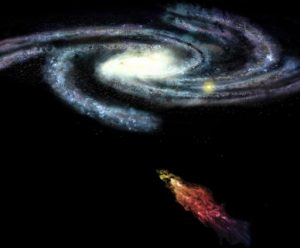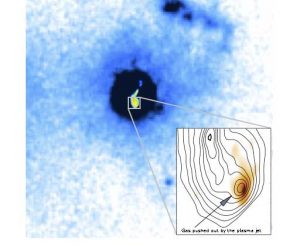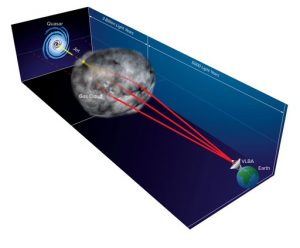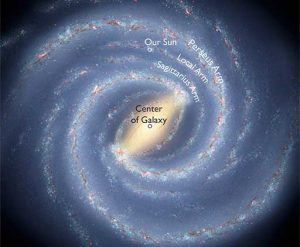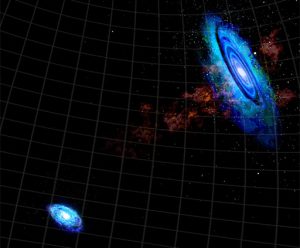Doom may be averted for the Smith Cloud, a gigantic streamer of hydrogen gas that is on a collision course with the Milky Way Galaxy.
Powerful Jets Blowing Material Out of Galaxy
Astronomers using a worldwide network of radio telescopes have found strong evidence that a powerful jet of material propelled to nearly light speed by a galaxy’s central black hole is blowing massive amounts of gas out of the galaxy.
Gas Cloud Causes Multiple Images of Distant Quasar
For the first time, astronomers have seen the image of a distant quasar split into multiple images by the effects of a cloud of ionized gas in our own Milky Way Galaxy.
Starburst to Star Bust
The cosmic fireworks that characterize a starburst galaxy can abruptly fizzle out after only a relatively brief period of star formation, and astronomers want to know why.
Earth’s Milky Way Neighborhood Gets More Respect
Our Solar System’s Milky Way neighborhood just went upscale.
Clouds Among Our Galactic Neighbors
In a dark, starless patch of intergalactic space, astronomers have discovered a never-before-seen cluster of hydrogen clouds strewn between two nearby galaxies, Andromeda and Triangulum.






